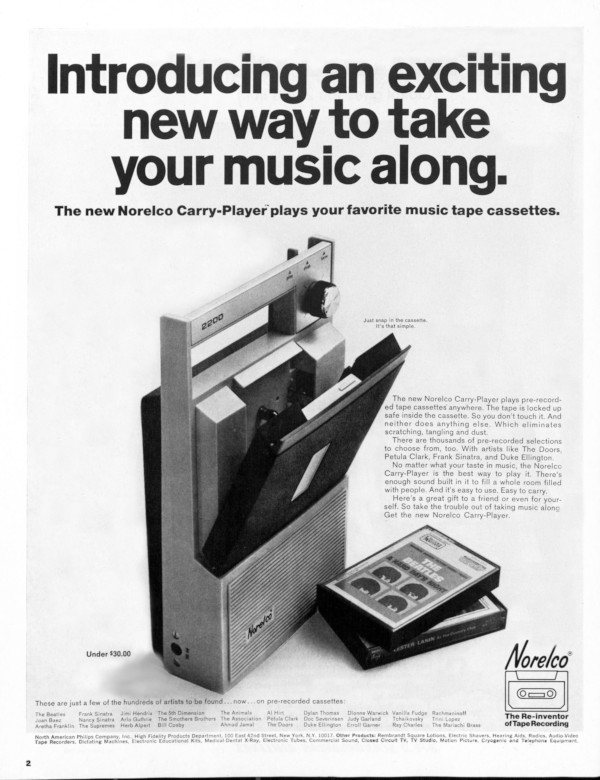They seem so simple, so familiar, so outdated now, it’d be hard to imagine how much impact cassette tapes had. Until the mid-’60s, most people had to listen to their music somewhere proximate to their stereo system or portable radio. Then the Dutch firm Philips introduced its closed, compact version of reel-to-reel recording tape and, in 1966, released the first pre-recorded music cassettes in the U.S.
Suddenly music lovers had the freedom to listen to what they wanted, where and when they wanted. Even more incredible, they could record their own cassettes with music taken from LPs or the radio. They began making “party tapes” and, when cassette decks became standard equipment in new cars, “road trip tapes.”

Struggling bands could now make their own promotional recordings. Enterprising fans were making unauthorized recordings of concerts and creating a thriving market in “bootleg” tapes. Cassettes helped undermine the communist bloc; young people in eastern Europe could now obtain smuggled recordings of decadent rock and punk music.
In 1979, the Sony Walkman, the first truly portable cassette player, hit the market. Soon Walkman headphones were sprouting up on the heads of active Americans who listened to their “exercise tape” while roller-skating or working out at the gym.
For all their convenience, though, cassettes were fated to be replaced by the more convenient and versatile compact disc, which was soon replaced by cloud storage and smartphones.
Boomers still holding onto a few favorite cassettes should know those tapes’ average lifespan is 30 years. Anything recorded before 1991 is living on borrowed time.
This article is featured in the November/December 2021 issue of The Saturday Evening Post. Subscribe to the magazine for more art, inspiring stories, fiction, humor, and features from our archives.
Featured image: Shutterstock
Become a Saturday Evening Post member and enjoy unlimited access. Subscribe now



